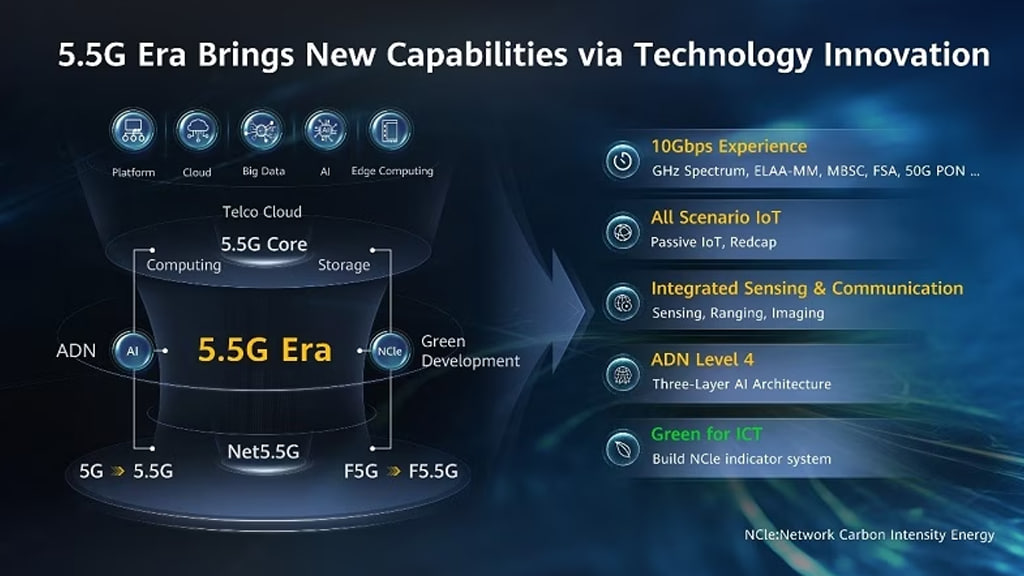News
Huawei wants network industry to jump into 5.5G Era

At MWC Barcelona 2023, Huawei launched new technologies for network businesses, and most of these urgest the industry to jump and progress in the 5.5G Era for fast network coverage.
To help network industry partners, Huawei has shared five major advantages of the 5.5G Era including:
- 10 Gbit/s experience for GHz spectrum, ELAA-MM, MBSC, FSA, 50G PON
- All-scenario IoT including passive IoT and Redcap
- Integrated sensing and communication for sensing, ranging, and imaging
- Level 4 autonomous driving network for three-layer AI architecture
- Green ICT for NCIe indicator system

Huawei says that the technological advancement made in the 5.5G era will bring 10 times more network performance than 5G.
- 10 times higher experienced speeds: The peak rates experienced by mobile and home broadband users will increase from 1 Gbit/s to 10 Gbit/s, ensuring better experiences in immersive and interactive services.
- 10 times more connections: Passive IoT technology enables an increase in the number of connected things from 10 billion to 100 billion.
- 10 times more deterministic: There will be a 10-fold improvement in latency, positioning accuracy, and reliability.
- 10 times higher energy efficiency: CO2 emissions per terabyte of data transmitted on a mobile network will be reduced 10 times.
- 10 times more intelligent: Autonomous driving networks (ADN) will be upgraded from level 3 to level 4 autonomy, with 10 times more efficient network O&M.
With 5.5G, operators can open up to give new business frontiers and drive a 100 times increase in new business opportunities.
3D:
3D applications, such as 3D online malls, 24K VR gaming, and glasses-free 3D video. Services with immersive experiences emerged in the 5G era, but in the 5.5G era, services with both immersive and interactive experiences will become commonplace.
The number of online users of immersive and interactive services in the 5.5G era is expected to exceed 1 billion, a 100 times increase.
Digitalization:
The number of 5G private networks deployed will increase from 10,000 today to 1 million by 2030. Fiber connections are all extending from homes and enterprises to production lines and even production equipment.
Cloud:
Cloud applications will need real-time, reliable, and easily accessible connectivity, bringing new opportunities to transmission networks, whether they are between edge cloud nodes, between edge cloud nodes and central clouds, or between enterprises and the cloud.
100 billion Cellular networks:
Passive IoT tags can transmit data, and can also be used for positioning and on temperature sensors. Such tags can be used in a variety of scenarios, such as automated inventory of warehouse items, agriculture and livestock development, and positioning of personal items.
As of now, over 30 billion passive IoT tags (based on technologies like RFID) are consumed a year. As more industries go digital, the number of passive IoT tags used every year is expected to reach 100 billion.
All around 5.5G industry:
5.5G is the next milestone of the network industry and could be used extensively in scenarios like a smart city road traffic services and perimeter sensing, making urban infrastructure more efficient and intelligent.
For example, in rainy or foggy weather, 5.5G networks can automatically detect obstacles or abnormalities on the road and notify drivers through the maps in their cars one kilometer in advance, making transportation safer.






